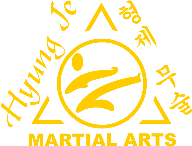Tae Kwon Do...A brief introduction.
Renowned for its explosive kicking techniques and its incredible creation of power, Tae Kwon Do has captured the interest of many a martial artist and has become one of the world’s most popular martial arts. Despite the many links with ancient martial arts, Tae Kwon Do has been heralded as the evolution of Karate. Taking many of Karate’s core techniques and applying advanced scientific principles in human kinetics and physiology, General Choi Hong Hi (9th Dan) created a self-defence system unequalled in power and dynamic movement; however it is not solely about Karate. Tae Kwon do is actually the culmination of many martial arts but the core techniques and philosophies come from an ancient martial art called T’ae-kyon, practiced over 1300 years ago in Korea and over the years has adopted aspects from other martial arts such as Karate and Hapkido, from the Japanese martial arts.
The systemisation and perfection of Tae Kwon Do was conducted to create a comprehensive, effective unarmed combat and fitness regime for the Korean military. The new name of Tae Kwon Do was chosen to reflect this art of self defence in 1955 to better reflect the nature of the art. Translated from Korean "Tae" stands for jumping or flying, to kick or smash with the foot. "Kwon" denotes the fist-chiefly to punch or destroy with the hand or fist. "Do" means an art or way. The literal translation is “Foot, Fist, Art”.
Tae Kwon Do incorporates a moral culture and philosophy to its training and does not merely aim at promoting the power and technique but also at preventing the misuse of the art, this can be seen in the tenets that the art was built on. It is a martial art for self defense and as such should only be used as a weapon for self-defense, or to defend the justice or the weak.

Tae won Do's founder.
General Choi Hong Hi (9th Dan)

Interested in learning more?
Email neil@hyungje.org today to book your free trial session

